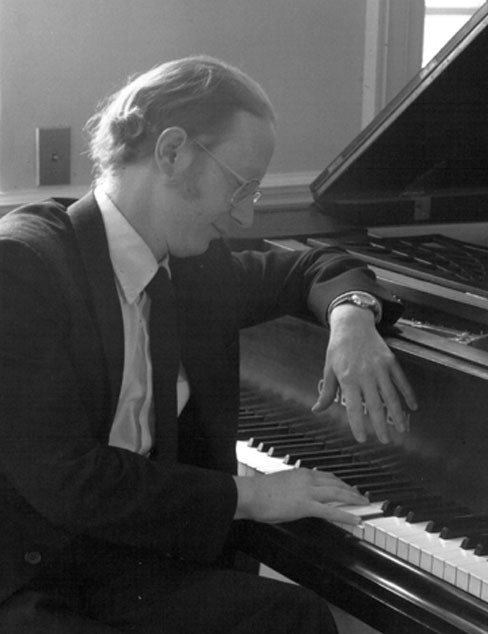I want all children to become future adults able to sing in tune and to read music.
The Two Syllable Method is the only method which instills the 'relatedness' of pitch in both the ear and the eye.
It begins from birth with special lullabies.
Around age two, the child is introduced to two-note melodies which encourage pitch-matching.
At age three, the parent reads to the child a story with similar two-note phrases. Every time the parent gets to these 'ballooned' musical captions in the story, the parent points and sings- "Hi, Lo, Hi!", introducing the child to reading music.
At age four, two minor third 'sets' are shown with two hand signs moved up and down.
At age five, in Kindergarten, the teacher points at short melodies which were previously heard in the home as nursery rhymes. Now, they read the notes. The white notes are "da" and the black notes are "di".
In first grade, the children read melodies with two notes, then three notes, and then four notes. Later material is previewed by rote, phrase by phrase. Some funny little songs with 'concrete solfege' "Stand, Middle, Sit" ("5, 3-3, 1", "Da, di-di, da",) are heard at home and sometimes sung in class.
In second grade, pentatonic (five note)melodies are read.
In third grade, six and seven note melodies are read.
In later grades, regular music is read- folk songs, world music, and early music. An occasional Renaissance styled "Da-di Madrigal" is read. With occassional use of advanced two-syllable material a sophisticated singing ear continues to develop into adulthood.
If the stylization of these songs seems to be a 'crutch', consider that instrumental study pushed on children is often a 'crutch' of a different sort. Solfege is still another 'crutch'. Solfege and instrumental study do not always ensure a good tuning sense. Solfege verbalizes pitch perception, and instrumental study 'fingerizes', 'motorizes' and 'rhythmizes' it. Both solfege and instruments tend to preoccupy the 'left-brain'. For many, this leaves them with a poor right-brain pitch sense as an adult. Stylized songs, on the other hand, will train the ear progressively and organically, in a very intuitive right-brain fashion. There are many left brain 'handles' that codify what both the left and the right brain has perceived, of course, but these are rapidly understood, intuitively related, and concretely meaningful and appropriate for the progressive stages in the child's development.
If the limitation of using two and three-note melodies seems too severe, consider that these pitch structures are natural to early childhood pitch development; they are 'skeletal' to other material the child is hearing elsewhere, or that you are free to teach if you wish. The child will internally absorb other more advanced material better while being exposed to this simple teaching along the way. Just keep coming back to this simple material, and the other songs will improve.
First grade is too early to introduce the National Anthem for most children, although this may change if my two-syllable songs can be recorded and printed and made available to parents of infants. If children are introduced to this music early, before grade school, more of them may be able to sing the National Anthem at a young age.
I want a two things:
1. I want everyone in the next generation to be able to sing in tune
2. and to be able to read vocal music at sight.
I am preparing to produce a whole series of music education recordings and sheet music to be used from birth through grade school. This series makes it easy for non-musicians to learn how to radically effect the musical intelligence and developmental aptitude of the next generation prior to age nine especially. It is all related to this profoundly simple phrase:
http://www.angelfire.com/mac/mcclain/track1Teach.html
The material for older children and adults is more interesting, of course, but everything in the 'system' is related to this. Taken as a whole, the complete series powerfully instills in the mind how pitches interrelate.
Tuesday, August 18, 2009
I want everyone in the next generation to be able to sing in tune
Subscribe to:
Post Comments (Atom)

No comments:
Post a Comment